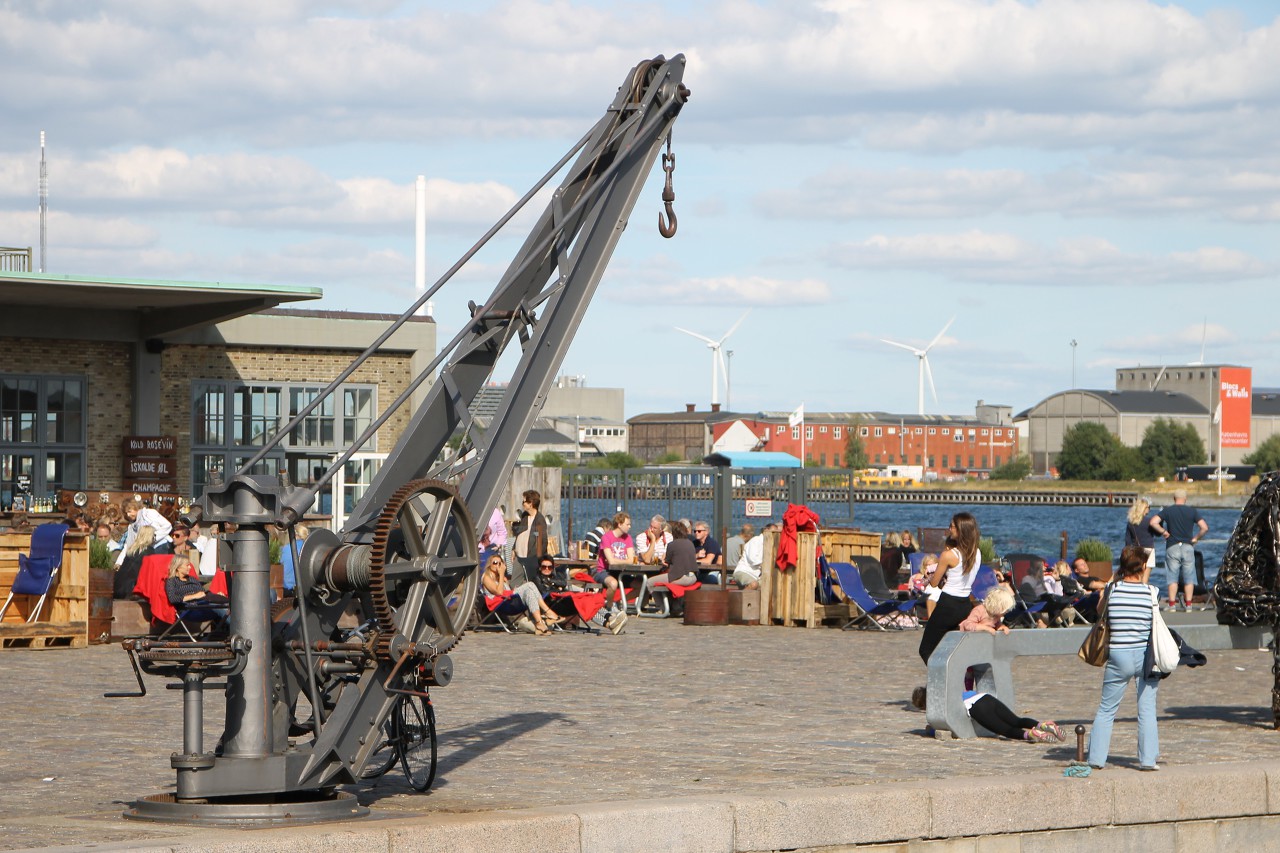Larsens Plads embankment, Copenhagen
In the first half of the 19th century, the Western shore of Inderhavnen Harbor was occupied by a large shipyard owned by Lars Larsen. over time, this area became known as Larens Plads, that is, "Larsen's place". In 1844, the shipyards were bought by Jacob Holm, owner of Denmark's largest shipping company, and used as a repair plant for his fleet. In 1870, the factory closed, and in its place was built the terminal of the Thingvalla Line company, which operated regular flights to the North American United States. From the Larsens Plads docks, steamers took thousands of Danes, as well as residents of other Scandinavian countries, in search of a better life. The line lasted until 1935. After the construction of the South harbour in the early 20th century, Inderhavnen lost its importance, and gradually its wharves and warehouses fell into disrepair. After the war, the city authorities demolished the wooden piers, and in their place built a wide embankment, which became the main promenade in Copenhagen.
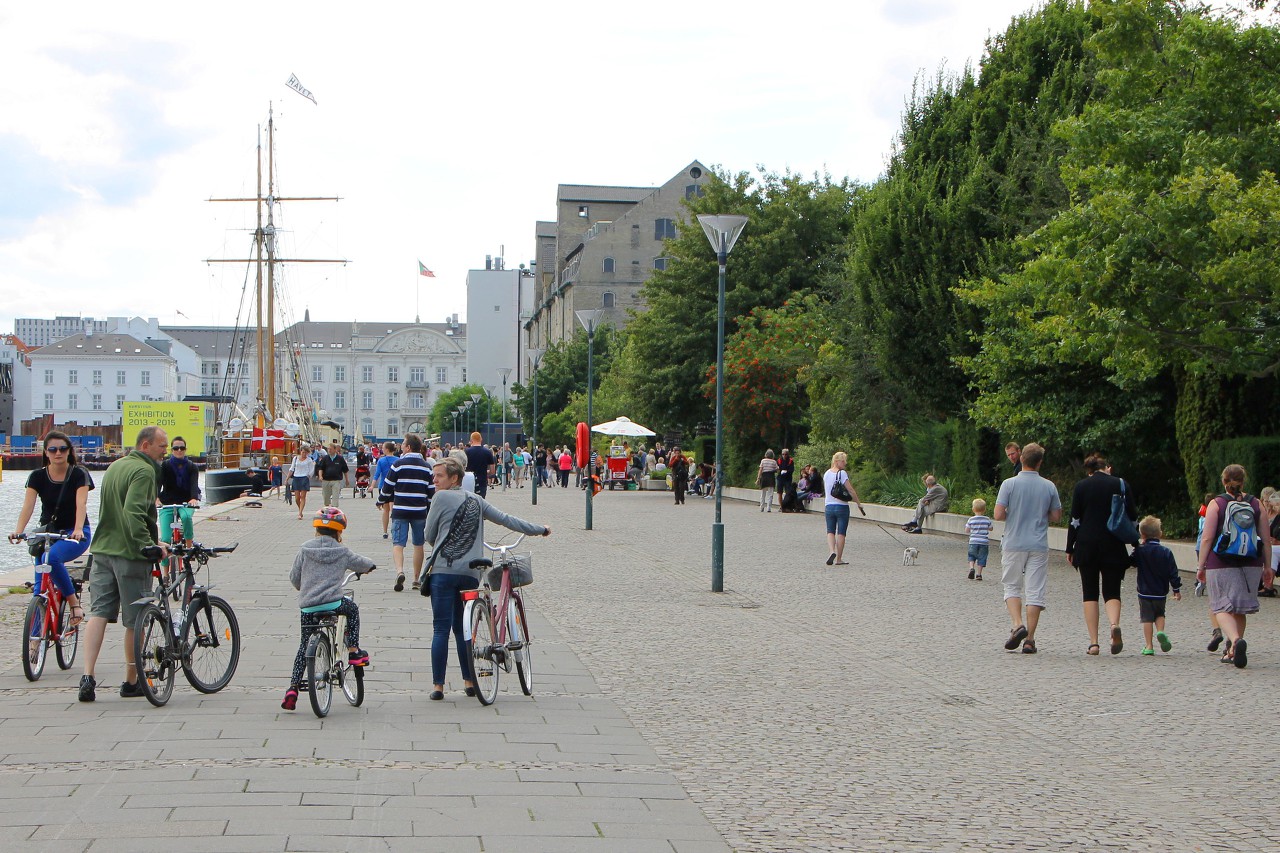
The blue warehouse (Det Blå Pakhus) is a former port warehouse built in 1783 by the architect Caspar Frederik Harsdorff. The warehouse was built for the Royal Greenland company, which supplies goods to Greenland, but during construction the building was sold to the Baltic-Guinea trading society. The warehouse was used for storing tobacco, sugar, and cotton imported from a distant African country. The Baltic-Guinea company lasted only five years, after which the warehouse was used as a granary, which function it performed until 1946. After that, the building was empty until the 70s. From 1978 to 1980, the warehouse was converted into a residential complex by architects Flemming Hertz and Ole Ramsgaard Thomsen. In the old days, the building had a blue roof and shutters on the windows, hence the name.
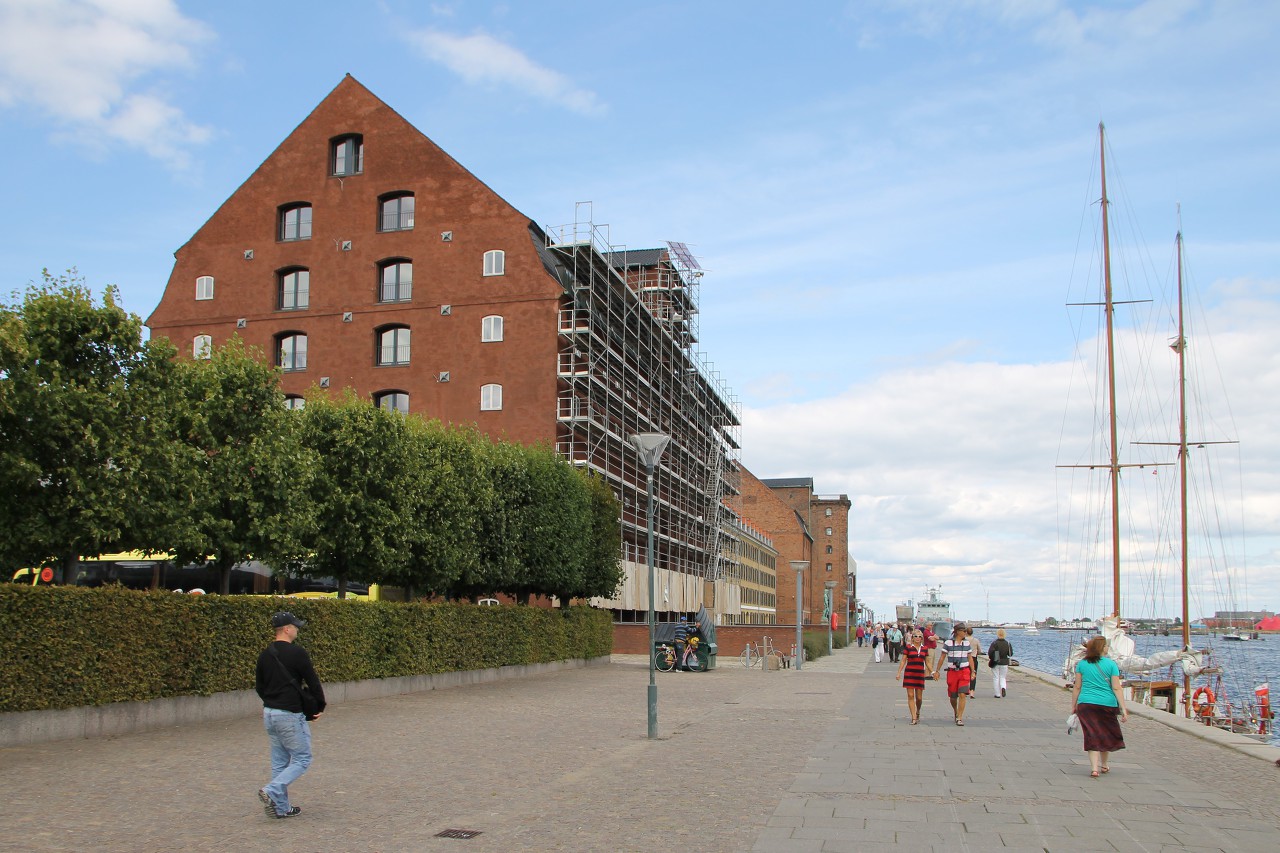
Next comes the Yellow warehouse (Det Gule Pakhus). This building was built by the architect G.E.Rosenberg in 1739 and also belonged to the Greenland company. After the port was removed from the city center, the building stood abandoned until a fire broke out in it. In 1968, the warehouse was converted into residential apartments designed by Hans Munk Hansen. Behind the Yellow warehouse, an eight-story warehouse of the Danish East India company was built in 1781. Now there are several museums. On the eighth floor is the so-called "Royal hall" (Kongeværelset), where the company's Board meetings were held. On other floors there is an exhibition of costumes of the Danish Royal theater.
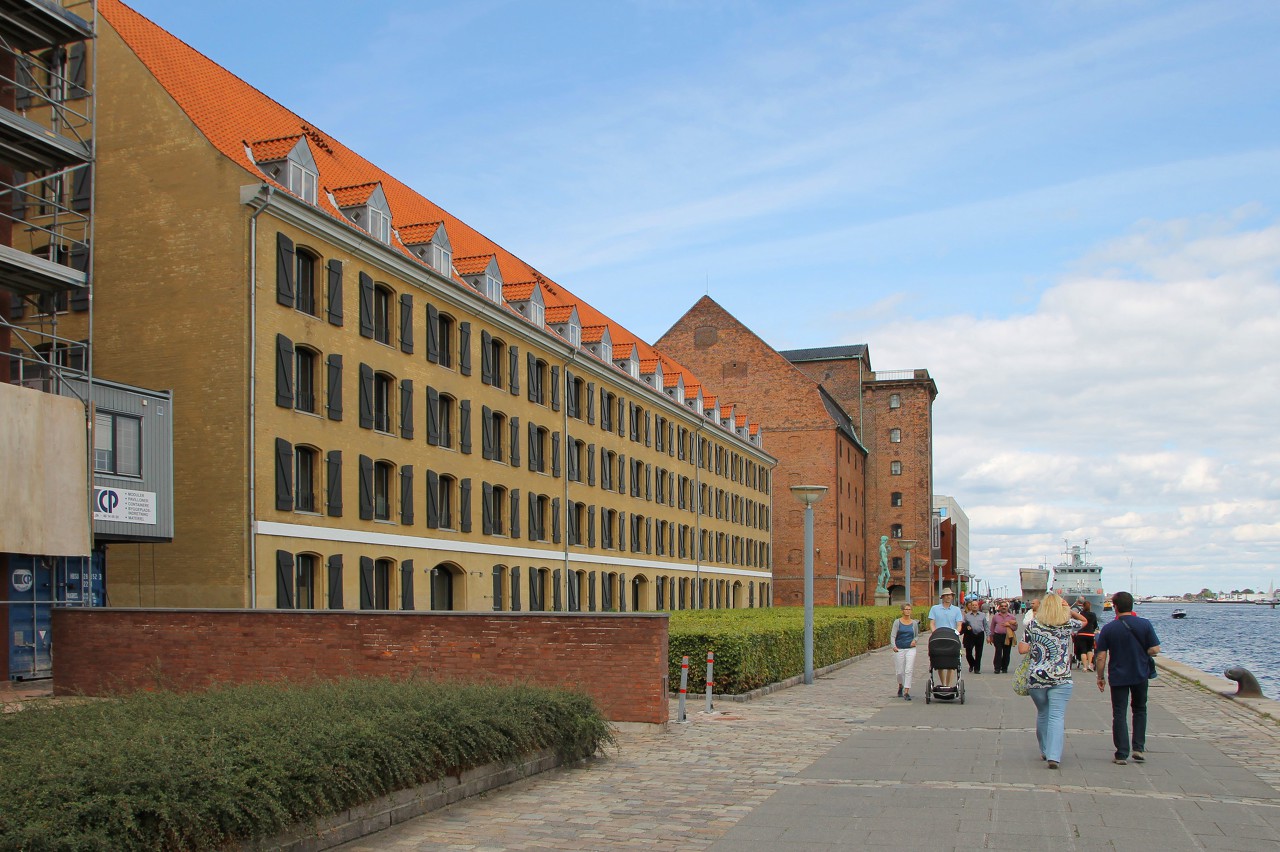
The three lower floors are occupied by the Royal collection of copies of sculptures and bas-reliefs from all over the world. In front of the building, you can admire the bronze statue of David, made by the famous brewer Carl Jacobsen in 1896. This is a copy of the famous marble sculpture made by Michelangelo in 1504 and located in the Academy of fine arts in Florence. The brewer presented the statue to the city and it was installed on the square in front of the town Hall. During the 20th century, the monument changed its address several times, until it settled on the embankment in 1993.
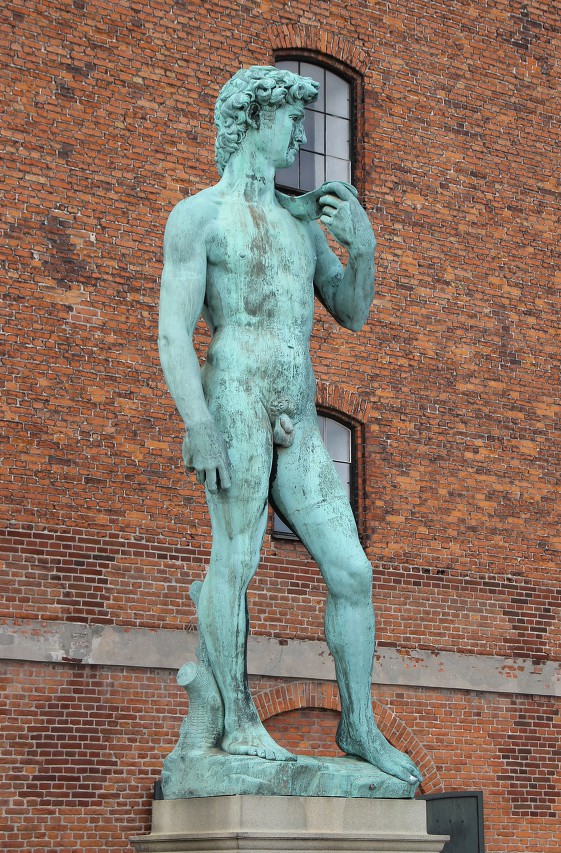
At the end of the embankment, on the shore of the small Bay of Toldbodens Bådehavn, there is an old hand-operated cargo boom. This is all that remains of one of the largest ports in Medieval Europe.
